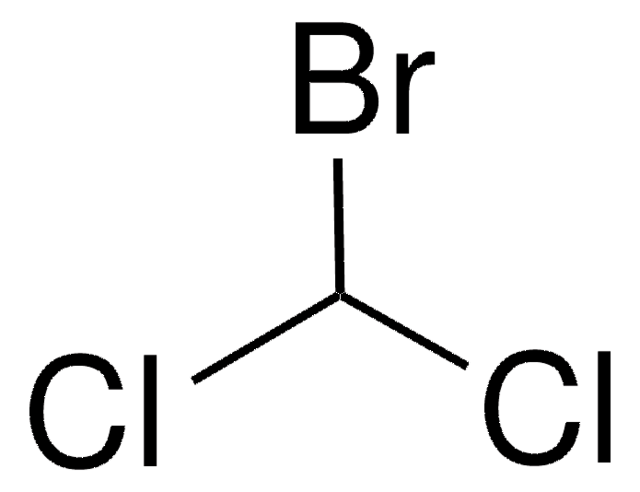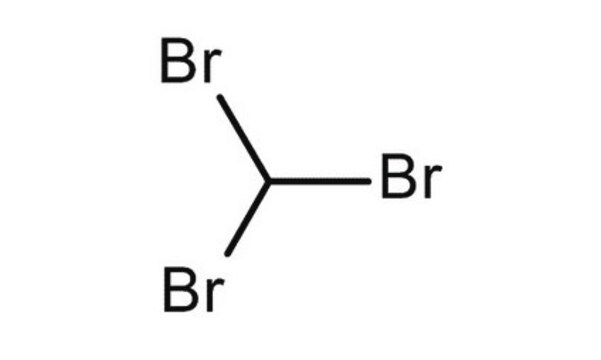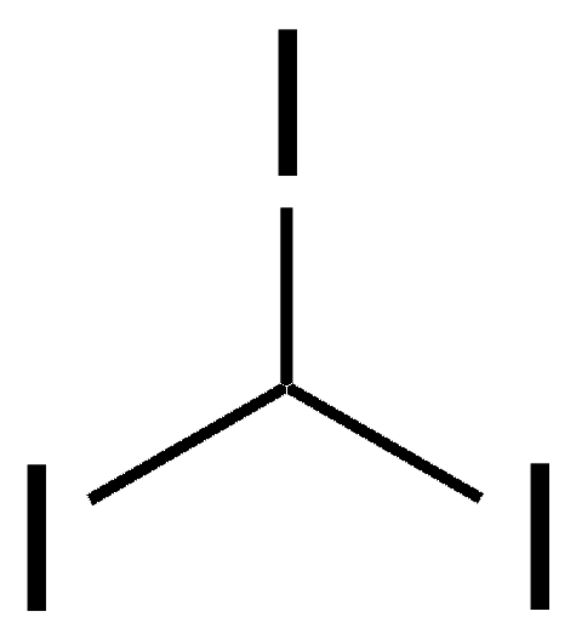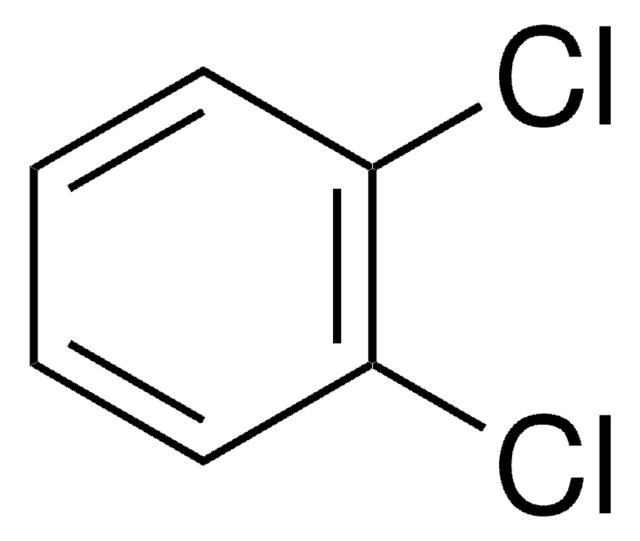Kluczowe dokumenty
36972
Bromoform
amylene stabilized, analytical standard
Synonim(y):
Tribromomethane
About This Item
Polecane produkty
klasa czystości
analytical standard
Poziom jakości
gęstość pary
8.7 (vs air)
ciśnienie pary
5 mmHg ( 20 °C)
jakość
amylene stabilized
okres trwałości
limited shelf life, expiry date on the label
metody
HPLC: suitable
gas chromatography (GC): suitable
współczynnik refrakcji
n20/D 1.595 (lit.)
bp
146-150 °C (lit.)
mp
5-8 °C (lit.)
gęstość
2.89 g/mL at 25 °C (lit.)
Zastosowanie
environmental
Format
neat
ciąg SMILES
BrC(Br)Br
InChI
1S/CHBr3/c2-1(3)4/h1H
Klucz InChI
DIKBFYAXUHHXCS-UHFFFAOYSA-N
Szukasz podobnych produktów? Odwiedź Przewodnik dotyczący porównywania produktów
Zastosowanie
Hasło ostrzegawcze
Danger
Zwroty wskazujące rodzaj zagrożenia
Zwroty wskazujące środki ostrożności
Klasyfikacja zagrożeń
Acute Tox. 3 Inhalation - Acute Tox. 4 Oral - Aquatic Chronic 2 - Eye Irrit. 2 - Flam. Liq. 3 - Skin Irrit. 2
Kod klasy składowania
3 - Flammable liquids
Klasa zagrożenia wodnego (WGK)
WGK 3
Temperatura zapłonu (°F)
106.3 °F - closed cup - (own results)
Temperatura zapłonu (°C)
41.3 °C - closed cup - (own results)
Środki ochrony indywidualnej
Eyeshields, Faceshields, Gloves, type ABEK (EN14387) respirator filter
Wybierz jedną z najnowszych wersji:
Masz już ten produkt?
Dokumenty związane z niedawno zakupionymi produktami zostały zamieszczone w Bibliotece dokumentów.
Klienci oglądali również te produkty
Protokoły
US EPA Method 8260: GC Analysis of Volatiles on SPB®-624 after Purge & Trap using "K" Trap, Fast GC Analysis
Nasz zespół naukowców ma doświadczenie we wszystkich obszarach badań, w tym w naukach przyrodniczych, materiałoznawstwie, syntezie chemicznej, chromatografii, analityce i wielu innych dziedzinach.
Skontaktuj się z zespołem ds. pomocy technicznej













